Auto123 reviews the 2022 Kia Carnival.
I’d seen the images of the new Kia Carnival – in reality the next generation of the Korean automaker’s Sedona minivan, rebadged to sync with the nameplate used elsewhere in the world – but I was still surprised by the look of the thing when I showed up to pick up my tester. There’s not much of the traditional minivan to the 2022 Carnival MPV, or Multi-Purpose Vehicle, as Kia hopes we’ll all refer to it.
We’ll stick with minivan as a designation, thank you very much, but there’s no denying Kia made real effort to distance itself from the format as it’s been traditionally known. Which is to say, quite rounded in shape, conservative, kind of bus-like, and just plain uncool esthetically. Here, the Kia literature throws around words like bold, confident and masculine to describe the Carnival, which tells you a lot about where their design focus was.
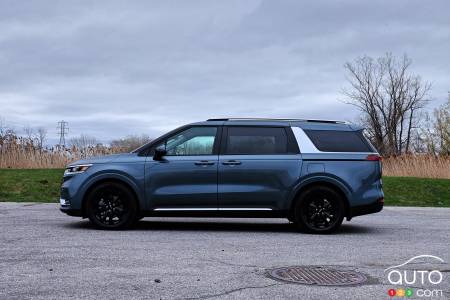
The look
To my eye, the Carnival looks more than a little like a stretched, low-riding Ford Explorer, with its bold, bossy front end and rectangular overall shape. My wife said it’s a wagon. Kia says its design is crossover-inspired. Frankly all of those views are valid to a point, so let’s just say this is a modern reimagining of the minivan. Because once you step inside, this is still very much a minivan. And I mean that in a complimentary way.
Besides, some of the exterior elements – plastic body cladding, the skid plates, that chrome C-pillar element - that would seek to trick the eye out of seeing a minivan are less convincing than others. But still, look at the profile of this thing; you’re a long way from the old Sedona, or the current Pacifica for that matter. At one point I could even imagine, by removing from my mind’s eye the upper rear portion of what Kia calls the “Island-Type” floating roof, as delineated by the chrome C-pillar component, that I was looking at a Honda Ridgeline-type profile!
The back end looks more like a traditional minivan than the rest, what with its width and vertical stance.
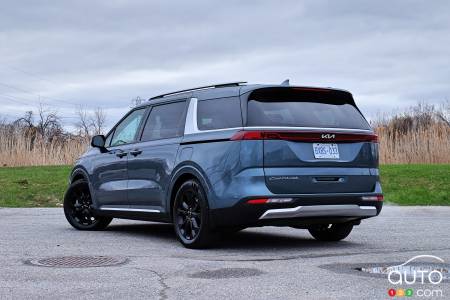
The interior
Now, jazzing up the outside is likely to attract some buyers reluctant to be seen in a minivan. But what’s inside still represents the true test of whether the Carnival will meet the needs of those who want the size and practicality of the format. And on that front, Kia’s new product definitely delivers a very roomy, very comfortable and very practical interior environment.
Keep in mind that our tester, the images of which appear here, was the range-topping SX trim, and so throws in everything possible to render this an upscale interior.
The seats are quite comfortable and easily positioned for the best driving position. Otherwise, there are elements of the new K5 here, but the materials feel upscale and include interesting woodgrain, painted or chrome elements. The dash features two 12.3-in screens (in the SX), one for the driver and their data and the other for infotainment; the two are connected to create a pleasing single horizontal display rectangle. Thankfully there are physical buttons for certain common commands.
The infotainment system includes a camera for spying on the kids in back, and an intercom for yelling at them through the audio system. Overall, you’ll feel like you’re sitting in a premium SUV.
Behind that first row is where the fun is, though. Access to the meat of the minivan from outside is easy thanks to the low floor, and buttons on your key fob allow you to single-click open and close each sliding side door. Open those and you reveal a really welcoming second row (legroom clocks in at 1,029 mm) featuring, in the case our tester, “VIP Lounge” seats - or captain’s chairs if you prefer - that recline back quite far and feature a liftable footrest.
The Carnival’s standard second-row seats are buckets, which, if the need arises, you can remove for a truly cavernous cargo area. Note that you can’t remove the captain’s chairs.
Of the three second-row seats in that configuration, the middle one slides back and forth independently from the others and can be folded down to make a table. In both iterations, there’s a third row that’s not particularly roomy but can be used to fit passengers if needed; those seats can be made to disappear completely in deep slots in the cargo area floor.
The versions
The model range starts with the LX (starting price $34,495). Standard features include heated windshield and front seats (plus that windshield is solar and acoustic treated), as well as lane keep assist, rear seat reminder alert, driver attention warning, high beam assist and rear parking sensors. Android Auto and Apple CarPlay integration is included. Climate control vents are found in all three rows, and USB ports are sprinkled about like pixie dust (there are nine in all).
The screen in this version is 8-inch, along with a 4.2-inch LCD data screen. Note that this version can only be had with the 8-seat configuration. Standard wheels are 17-inch in diameter, and you get skid plates front and rear.
The LX+ ($37,995) adds long bars on the long roof, and inside, wireless smartphone charging plus a rear luggage USB port and a smart key and push button. The driver’s seat is power-adjustable, the sliding doors can be opened remotely and the tailgate is also power-operated. The climate control system becomes multi-zone, and the steering wheel and front seats are heated.
The EX ($41,995) adds extra safety and tech features (for example with the inclusion of UFO Intelligence Telematics), the wheels grow to 19 inches, the grille turns matte chrome coated, the seats get leatherette covering, and the passenger seat is now also power-adjustable.
Next is the EX+ ($45,295), which brings in LED fog lights and Dual LED headlights, as well as bigger screens (12.3-inch instrument cluster and 12.3-inch multimedia screen).
Finally, the king of the castle is the SX ($48,295), which gets niftier black wheels, a dual sunroof, Bose premium audio, a passenger-view camera, blind view monitoring, ventilated front seats, heated and ventilated second-row seats and even more safety stuff. As well, here you can choose the seven-person configuration which allows you to include those Power Relax Captain’s Chairs that recline way, way back.

The powertrain
The Carnival’s sole engine is a 3.6L V6 delivering 290 hp and 260 lb-ft of torque with an 8-speed automatic transmission. Drive modes are available, but hey this is a minivan not a performance SUV, bold and masculine front end be darned, so no getting all excited. You might give the Sport mode a shot at the beginning to tighten up the parameters a wee bit, but my guess is you’ll soon just leave it in Normal mode and be done with it.
The Carnival delivers fuel consumption (officially 12.0L/100 km city, 8.9L/100 km highway) that is acceptable but won’t be a particular selling point for the model. Its numbers place it slightly behind and the Chrysler Pacifica and the Honda Odyssey and the Toyota Sienna.
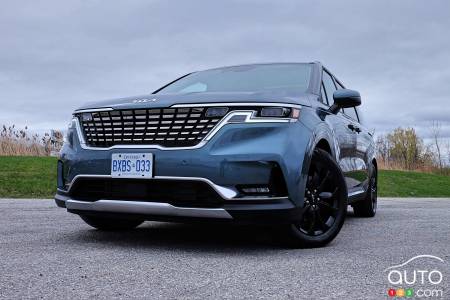
The drive
The powertrain delivers numbers slightly above those of the Chrysler Pacifica, but generally the drive you get is similar. Kia says the chassis is stiffer than any Sedona’s ever was (the model is built on the N3 platform also used by the Sorento and the K5), and it does appear you get a tighter feel because of it on the road. This is still a big, heavy vehicle, so stopping distance should be measured accordingly, and slaloming along your favourite country road will reveal the limitations of this minivan.
But of course, that’s not what you’re normally going to be doing with the Carnival. The suspension is designed to ensure maximal comfort, but the flip side is the vehicle gets a little flustered when encountering purposeful potholes.
Overall, what you want is a reassuring, comfortable ride, but one that doesn’t feel approximate either in the steering or the suspension; and on that front, it’s mission accomplished for Kia. I looked for signs of body roll and found little sign of it. The ride during the time I had with the Carnival was quite exceptionally quiet – good news for those passengers who will be watching or listening to stuff plugged into any of the piles of USB ports scattered about. If they’re not snoozing on the fully reclined Power Relax Captain’s Chairs, that is.
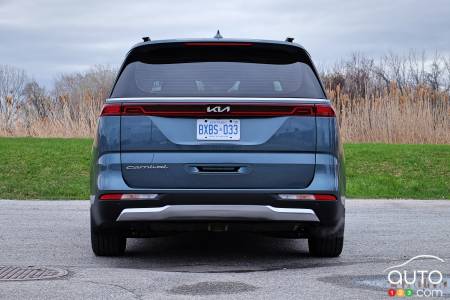
We like
Great practicality
Bold exterior looks, particularly the front end
Comfortable, reassuring ride
Plenty of power under the hood
Those VIP Lounge captain’s chairs
Interior ergonomics
Intercom so you can yell at the kids!
We like less
Not the most fuel-economical
A little vulnerable to road imperfections
Takes a bit of time to learn the art of folding/removing seats
A few fairly “essential” features not included in the base version
The competition
Chrysler Pacifica
Honda Odyssey
Toyota Sienna
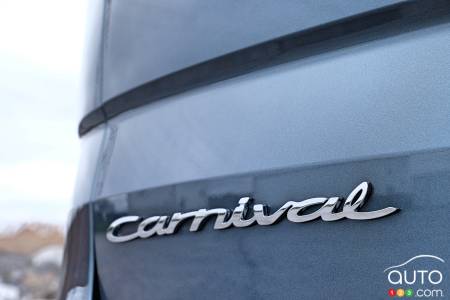
Road Tests and Reviews








